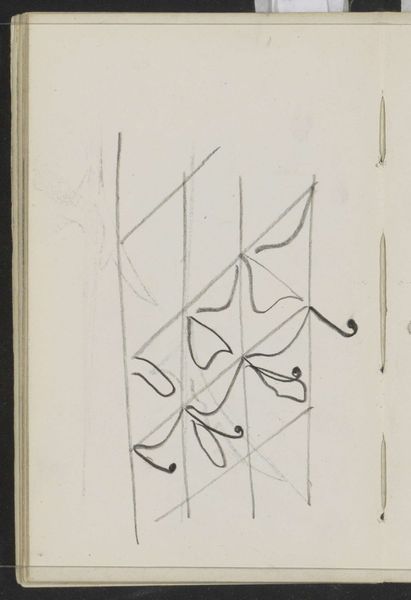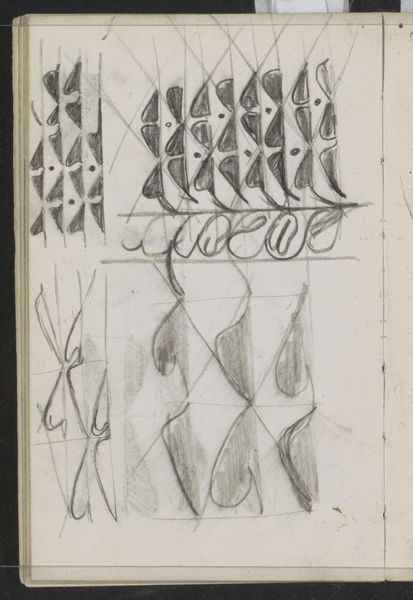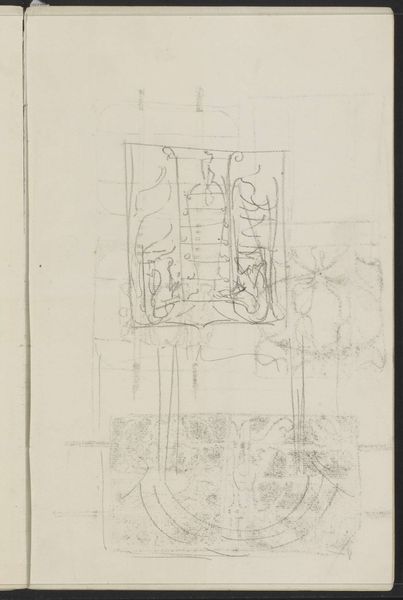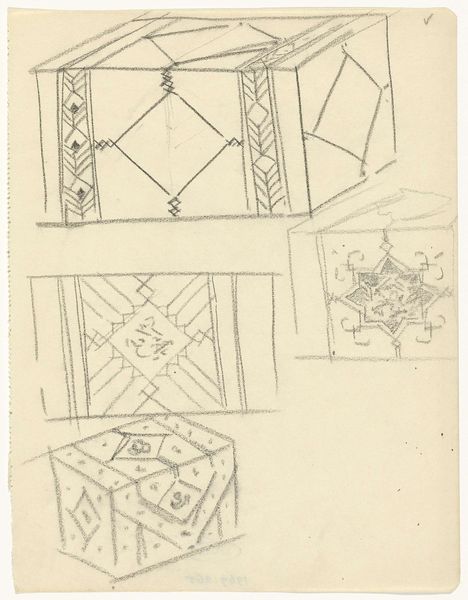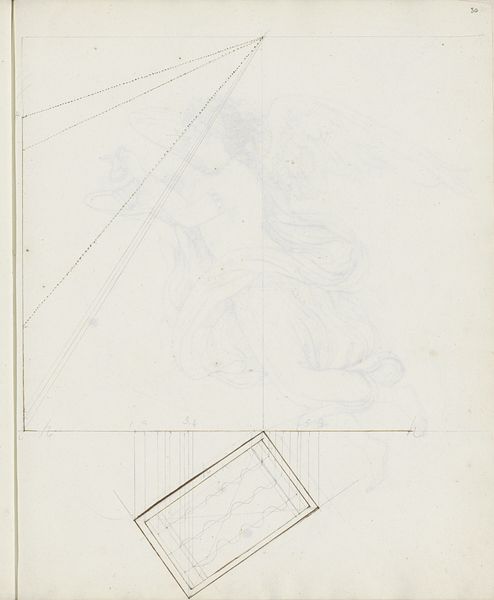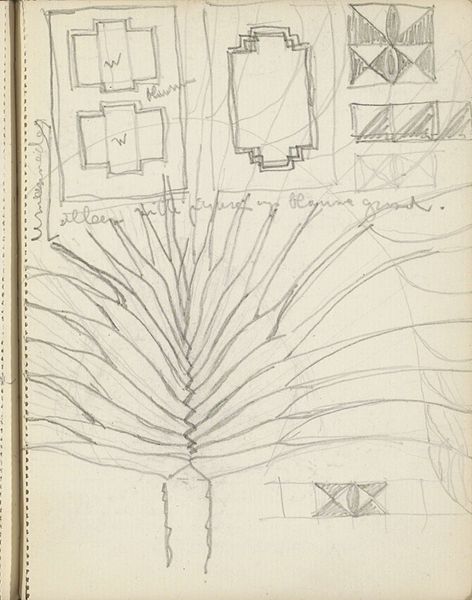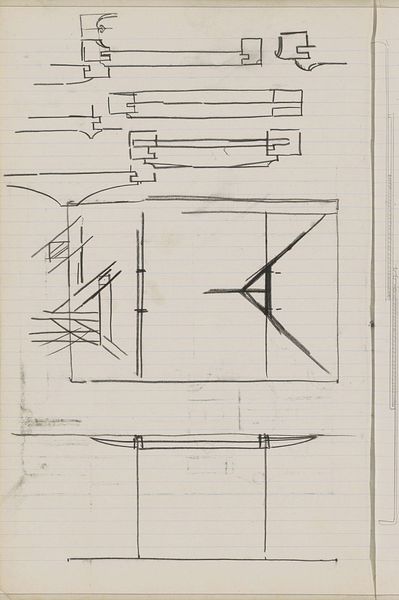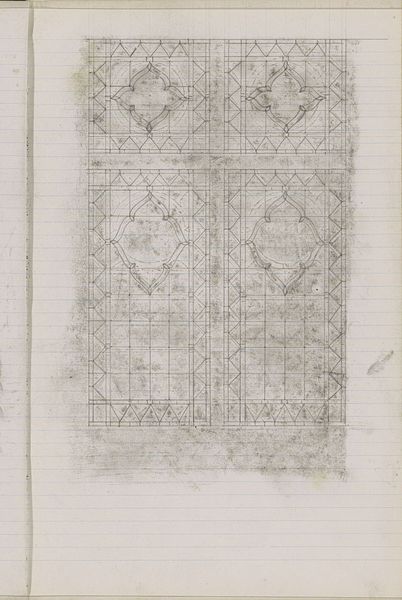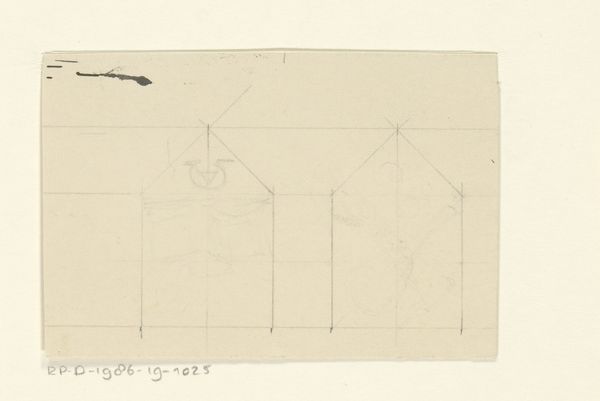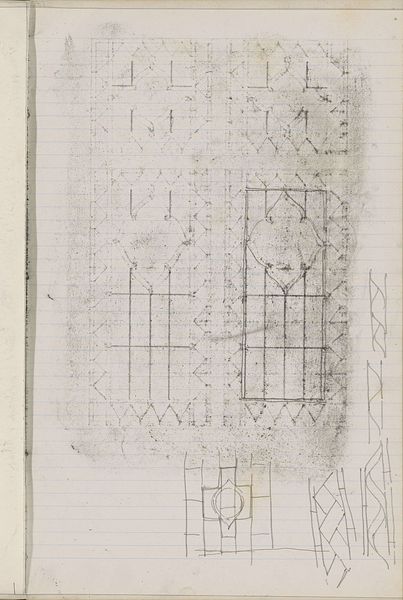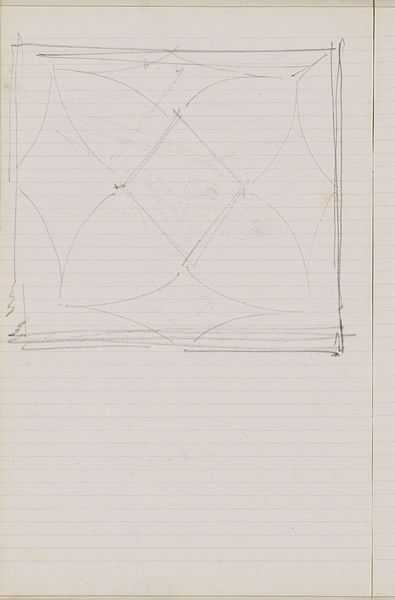
drawing, pencil
#
drawing
#
amateur sketch
#
aged paper
#
sketch book
#
hand drawn type
#
personal sketchbook
#
sketchwork
#
geometric
#
detailed observational sketch
#
pencil
#
abstraction
#
sketchbook drawing
#
storyboard and sketchbook work
#
sketchbook art
Copyright: Rijks Museum: Open Domain
Curator: I find myself immediately drawn into the quiet intimacy of this page. It's titled "Plantmotief en een compositie met rechthoeken," created sometime between 1906 and 1945. It’s a pencil drawing now held in the Rijksmuseum. Editor: The fragility of the aged paper and the delicacy of the pencil lines evoke a sense of uncovering a hidden world, doesn't it? The geometric forms almost seem to float against the pale ground. There's an understated energy here. Curator: Absolutely. The artist seems to be exploring a dichotomy. On one hand, the 'Plantmotief', repeated in what appear to be small window panes. On the other, more severe geometry in that conjoined diamond shape – an exercise in precision, seemingly fighting for dominance. The plant-like element appears trapped behind the grid. Editor: Indeed. The grid acts as a kind of formal constraint. Notice how the rectangles are not quite perfect. There's a subtle tension in the near misses of the lines, like an approximation of a system rather than perfection. And consider the placement on the page: they aren’t neatly centered, but slightly off, adding to the dynamism. It is this arrangement and imbalance that produces such intrigue. Curator: I agree. These choices hint at deeper psychological tensions, reflecting the artist’s exploration of organic versus artificial forms. Could this also reveal the artist’s views regarding his environment? This era wrestled with technological advances threatening organic life; could these elements also reflect those concepts? Editor: I think your analysis resonates, especially noting the period the work originated from. What’s remarkable is how such simple materials are composed, such as the recurring grids and pale tones, can result in so much intellectual depth, with its minimalist aesthetic still striking today. Curator: Precisely. I love that we are left questioning the artist's motivations, the piece provoking thoughts of the past, and the artistic mind trying to express his world. Editor: This careful execution speaks volumes about the artist's understanding of structure and composition— and how their distortion can communicate meaning far beyond what initially meets the eye.
Comments
No comments
Be the first to comment and join the conversation on the ultimate creative platform.
